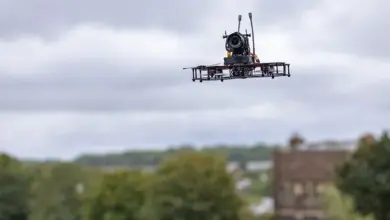
In recent years, home automation has rapidly transformed the way we live, ushering in the era of smart homes. These technological advancements not only offer convenience and security but also help in optimizing energy usage, thus contributing to a more sustainable lifestyle. The concept of a smart home involves integrating various electronic devices that can be controlled remotely, often through mobile applications or voice commands. This article delves into the intricacies of home automation, exploring the various smart home devices, their benefits, and how they are revolutionizing modern living.
What is Home Automation?
Home automation refers to the technology that allows you to control and monitor different home systems automatically. This includes anything from adjusting the lighting to managing the temperature, securing the home, and controlling entertainment systems. With a centralized system or smart hub, such as Google Home or Amazon Alexa, homeowners can automate a wide range of tasks, making their lives more efficient and comfortable.
Home automation is made possible by the Internet of Things (IoT), a network of interconnected devices that communicate with each other via the internet. Through this connectivity, users can control various home appliances remotely, monitor activity through security cameras, and even receive notifications if something unusual occurs.
History of Home Automation
The idea of automating homes has been around for decades, but it wasn’t until the late 20th century that it became feasible for the average homeowner. Early versions of home automation focused on lighting control and security systems, often requiring expensive, custom installations. However, with advancements in wireless technology and the rise of the IoT, home automation has become more affordable, accessible, and user-friendly. Today, even the simplest smart home setup can be installed by someone with little technical knowledge, offering a wide range of functionalities.
Types of Smart Home Devices
There are numerous smart home devices designed to automate everyday tasks and improve your home’s overall efficiency. These devices can be divided into several categories:
1. Smart Lighting Systems
Smart lighting allows users to control the lights in their home using an app or voice commands. Systems like Philips Hue or LIFX can change the brightness and color of lights, and can even be programmed to turn on or off at certain times of the day. With motion sensors and occupancy detection, smart lights can switch off automatically when a room is unoccupied, helping to conserve energy.
Benefits:
- Remote control via smartphone or voice assistant.
- Energy savings with automation and scheduling.
- Mood lighting with customizable color options.
2. Smart Thermostats
Smart thermostats like Nest and Ecobee offer precise control over the heating and cooling of your home. They learn your habits and preferences over time, adjusting the temperature automatically based on your daily routines. These devices can also be controlled remotely, allowing you to set the perfect temperature before arriving home.
Benefits:
- Energy efficiency through self-learning algorithms.
- Remote temperature control.
- Integration with other smart home devices for a seamless experience.
3. Smart Security Systems
Security is one of the primary concerns for homeowners, and smart security systems provide an advanced solution. Systems like Ring and Arlo include smart cameras, doorbell cameras, and sensors that alert you when someone approaches your home or if there’s unusual activity. These devices often come with features like two-way communication, motion detection, and real-time video feeds accessible from a mobile app.
Benefits:
- Real-time monitoring and alerts.
- Remote access to security footage.
- Enhanced safety with integration into other smart home devices.
4. Smart Locks and Doorbells
Smart locks and doorbells make it easier to manage access to your home. August Smart Lock and Yale Smart Lock allow you to lock or unlock your doors using your smartphone, and even provide temporary access to guests or service workers. Smart doorbells like Ring offer video capabilities and can notify you when someone is at the door, even if you’re not home.
Benefits:
- Keyless entry for improved security and convenience.
- Remote access to lock and unlock doors.
- Real-time notifications for better control over who enters your home.
5. Smart Appliances
Many household appliances are now integrated with smart technology, offering features that enhance functionality and ease of use. Smart refrigerators like those by Samsung can notify you when groceries are running low, while smart ovens and coffee makers can be programmed to operate at specific times. These appliances help save time and make daily tasks more efficient.
Benefits:
- Time-saving features through automation.
- Energy efficiency with remote control and scheduling.
- Enhanced usability and connectivity.
6. Smart Entertainment Systems
Smart entertainment devices, such as Amazon Fire TV, Apple TV, or Google Chromecast, allow users to stream content from various platforms using voice commands or smartphone apps. They also integrate with home automation systems, so you can turn on your TV, dim the lights, and set the perfect ambiance for movie night with a single command.
Benefits:
- Convenient content streaming from multiple sources.
- Seamless integration with voice assistants.
- Multi-room audio and video syncing capabilities.
Benefits of Home Automation
1. Convenience
One of the most significant benefits of smart home devices is convenience. Whether it’s adjusting the thermostat from your couch, turning on the lights before you get home, or checking who’s at your door from across town, these devices make daily tasks simpler and more efficient. With voice assistants like Amazon Alexa or Google Assistant, users can control multiple devices simultaneously with simple voice commands.
2. Energy Efficiency
Smart home devices are designed to help optimize energy consumption. Automated systems, such as smart thermostats and lighting systems, ensure that energy is only used when necessary. For instance, smart lights can turn off when a room is unoccupied, and smart thermostats can adjust the temperature based on occupancy and time of day, significantly reducing energy bills over time.
3. Improved Security
Smart home security systems offer enhanced protection through real-time monitoring, remote control, and instant notifications. With features like motion detection, night vision, and two-way audio, homeowners can keep an eye on their property and respond quickly to any suspicious activity, whether they’re at home or away.
4. Cost Savings
Though there is an initial investment in purchasing smart home devices, the long-term cost savings are considerable. Devices like smart thermostats can reduce energy bills by optimizing heating and cooling, while smart lighting systems minimize electricity usage. Additionally, smart security systems can help prevent costly break-ins and property damage.
5. Customization and Flexibility
Home automation offers a high level of customization, allowing users to create tailored schedules and routines. For example, you can set your lights to gradually brighten in the morning or create a night mode where all the lights dim and the security system activates. The flexibility of smart devices enables users to build a personalized environment that meets their specific needs and preferences.
Challenges of Home Automation
Despite the numerous advantages, home automation comes with some challenges:
1. Complexity and Learning Curve
For individuals unfamiliar with technology, setting up and managing smart home devices can be overwhelming. Some systems require intricate configuration, especially when integrating multiple devices from different manufacturers.
2. Security and Privacy Concerns
As with any internet-connected device, smart home devices are susceptible to hacking and security breaches. Without proper security measures, such as strong passwords and secure networks, sensitive information and control over your home can be compromised.
3. Compatibility Issues
Not all smart devices are compatible with one another. Some devices may require specific hubs or work only with certain platforms like Google Home or Apple HomeKit. This can limit the flexibility of building a fully integrated smart home ecosystem.
4. Cost
Although the prices of smart devices have become more affordable in recent years, building a fully automated home can still be expensive. The initial cost of purchasing and installing these devices may be a deterrent for some homeowners.
Future of Home Automation
The future of home automation is exciting and full of potential. With the rise of artificial intelligence (AI) and machine learning, smart homes are becoming more intuitive and capable of learning from user behavior to provide a truly personalized experience. For instance, AI-powered systems can learn your daily routines and adjust settings based on your preferences without manual input.
Moreover, advances in 5G technology will further enhance the capabilities of smart home devices by providing faster and more reliable connectivity. This will make it easier to control devices in real-time, even from remote locations.
The integration of renewable energy systems, such as solar panels with smart home technology, also holds promise for creating more sustainable homes. Home automation systems can optimize energy usage and ensure that renewable energy is used efficiently.




